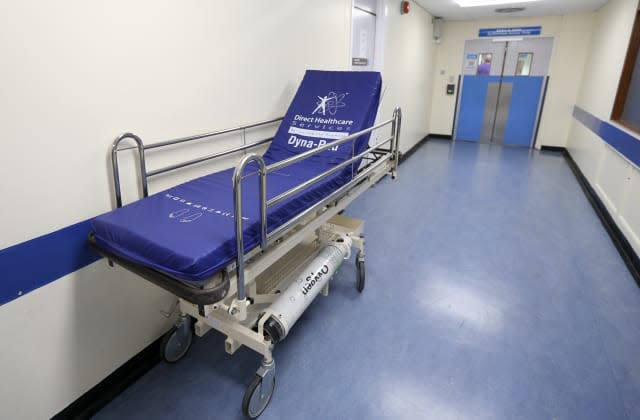New coating could be key in fighting hospital-acquired infections

A new antimicrobial coating could be the key to the fight against hospital-acquired infections, scientists say.
The substance can rapidly kill bacteria which cause some of the most common infections.
It is hoped that it could be used on surfaces such as toilet flush handles, bed rails and metal medical equipment.
The coating for steel was developed by researchers at the University of Birmingham, patented by University of Birmingham Enterprise, and will be commercialised by a new company, NitroPep, which is also the coating’s name.
Working with the Royal Centre for Defence Medicine and the Royal Navy, the scientists conducted a clinical trial which saw NitroPep applied to steel surfaces.
These included door handles, an operating theatre and part of a communal toilet on board a Royal Fleet Auxiliary ship.
Surfaces coated in NitroPep and control surfaces that were not treated were subject to standard daily cleaning regimes while the ship was at sea for 11 months.
The surfaces were swabbed on a weekly basis and the results were analysed in the laboratory at the University of Birmingham.
The coating was found to be effective against five bacteria that are responsible for hospital-acquired infections – Staphylococcus aureus, Staphylococcus epidermidis, Enterococcus, Pseudomonas aeruginosa and Escherichia coli.
Scientists found the coating killed bacteria within 45 minutes.
They said that currently commercially available technologies do not have a significant effect on bacteria until up to 24 hours.
Dr Felicity de Cogan, Royal Academy of Engineering enterprise fellow at the University of Birmingham, and chief scientific officer at NitroPep, said: “One of the biggest public health issues across the world continues to be the spread of infection and contamination from bacterial, viral and insect-borne diseases.
“Despite increased sterilisation and education campaigns, hospital-acquired infections have not been eradicated and the accumulation of bacteria on frequently touched surfaces is key in the transmission of infection.
“Therefore, our priority must be to research, develop and implement safe and effective prevention techniques and technologies.
“Our successful clinical study shows that our non-toxic coating could be used on regularly handled steel surfaces, such as toilet flush handles, bed rails and metal medical equipment, across healthcare, education and other industrial and leisure settings helping to create safer and healthier environments.”


